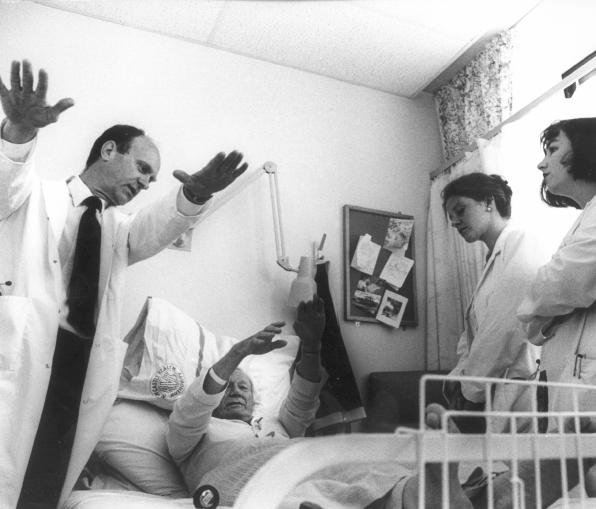William Butler Yeats said that education should be “not the filling of a pail but the lighting of a fire.” But how far does this aspiration tally with our own experience of medical education? We all remember good teachers who inspired and motivated us; delivered useful content in an assimilable manner; harnessed our emotional as well as cognitive energies as learners. Unfortunately, most of us also remember too many bad teachers and poor educational experiences—dull lectures, irrelevant content, assessment of rote learning in preference to comprehension, and presentation driven more by the convenience of teachers than our learning needs. The kind of dispiriting experience which erodes motivation, and turns us into “have to” rather than “want to” learners.
This week the BMJ launches a new section called “Learning in Practice.” We like the word learning because its focuses on the outcome, which really matters to patients—clinicians who know what they need to know to practise good medicine. Learning and education—the process by which we hope to achieve it—are everyone's business in medicine today. Yet learning remains one of the most unexamined parts of clinical practice. All doctors are teachers and learners throughout their careers, and lifelong learning is something we aspire to. Yet most of us know little about how to do it well.
Beacons of excellence in medical education exist, but much of the landscape is murky. The common picture is of ad hoc policies and initiatives, poorly informed by evidence. In the darkest corners things have moved little beyond the rhetoric of “see one, do one, teach one.” Meanwhile, a cycle of educational abuse continues to play its part in doctors' underperforming or even leaving the profession.
If clinicians are relatively uninformed about best educational practice it is not because no evidence exists. True, much educational research is conducted using methods unfamiliar to doctors. Its quality is mixed, with a greater focus on observational research and inductive reasoning and fewer experimental data than is the case with clinical research. Much of it is published in medical education journals, which clinicians tend not to read. So the evidence that exists seems inaccessible and easy to dismiss. Yet this is unacceptable where the alternative is evidence free medical education at the public expense. Allowing educational knowledge, expertise, and inspiration to accumulate, unused and undervalued, in ivory towers marked “medical education department,” while clinicians battle on in ignorance, is profligacy with resources no healthcare system can afford. 
What can a general medical journal do? Clearly not provide all the answers, or even a significant proportion of the content needed to address this gap between educational evidence and practice. What we can do is encourage a wider debate. In our new section we hope to publish original research and review articles which highlight good teaching and learning practices of use to a wide range of clinicians. If we cannot fill the gap, we might draw attention to it. Learning in Practice will appear each month and will be the place where educationalists and clinicians can exchange ideas aimed at delivering better educated doctors capable of better patient care.
Tomorrow's doctors need more than ever to be lifelong learners. Rather than mere pails full of educational content they must be adept at accessing “just in time” knowledge, driven by professionalism, responsible for their own learning, and enthusiastic to learn how to manage patients better. Please send us articles that might help point in this direction.


